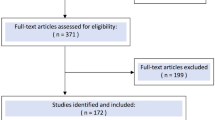Abstract
Issues of hypertrophic circumareolar scars and malpositioning or irregularity of the nipple–areola complex (NAC) are frequently associated with breast reduction or mastopexy techniques that rely on an ample excision of skin around the areola, either alone or associated with a vertical incision. To avoid such problems, many efforts have been made to improve the accuracy of preoperative marking for the future NAC. However, the correct design and position of the NAC may be difficult to achieve for the patient at the end of the procedure after closure of the skin incisions. This article describes a novel, simple, and effective method for intraoperative shaping and positioning of the NAC. The described method is based on using a specially designed surgical instrument to determine the best position, diameter, shape, and configuration of a new NAC. This study aimed to demonstrate the efficacy of this method to reduce the common complications of the periareolar region in reduction mammaplasty and mastopexy.
Level of Evidence IV
This journal requires that authors assign a level of evidence to each article. For a full description of these Evidence-Based Medicine ratings, please refer to the Table of Contents or the online Instructions to Authors at www.springer.com/00266.









Similar content being viewed by others
References
Righi B, Robotti E (2010) Successfully exploiting two opposing forces: a rational explanation for the “interlocking suture”. Aesthetic Plast Surg 35:177–183
Gulyás G (2004) Marking the position of the nipple–areola complex for mastopexy and breast reduction surgery. Plast Reconstr Surg 113:2085–2090
Tercan M, Baskurt H (2009) Auto-circle device (Tercan device) for marking a vertical scar mammaplasty. Eur J Plast Surg 32:163–165
Barron EJ, Godwin Y (2011) Peri-areolar marking in Lejour’s mammoplasty: a simple device to aid trainee learning: the flexible curve. Eur J Plast Surg 34:417–419
Hidalgo DA (1999) Improving safety and aesthetic results in inverted T scar breast reduction. Plast Reconstr Surg 103:874–886
Benelli L (1990) A new periareolar mammaplasty: the “round-block” technique. Aesthetic Plast Surg 14:93–100
Gulyás G (1996) Combination of the vertical and periareolar mammaplasty. Aesthetic Plast Surg 20:369–375
Atiyeh BS, Rubeiz MT, Hayek SN (2005) Refinements of vertical scar mammaplasty: circumvertical skin excision design with limited inferior pole subdermal undermining and liposculpture of the inframammary crease. Aesthetic Plast Surg 29:519–531
Ahmed J, Lista F (2008) Vertical scar reduction mammaplasty: the fate of nipple–areola complex position and inferior pole length. Plast Reconstr Surg 121:1084–1091
Vogt PM, Muhlberger T, Torres A, Peter FW, Steinau HU (2000) Method for intraoperative positioning of the nipple–areola complex in vertical scar reduction mammaplasty. Plast Reconstr Surg 105:2096–2099
Pitanguy I (1965) Surgical treatment of breast hypertrophy. Br J Plast Surg 20:78–85
Cheema MH, Singh S (2008) Modified pitanguy technique for intraoperative symmetrical localization of nipple–areola complex. Aesthetic Plast Surg 32:920–922
Beer GM, Spicher I, Cierpka KA, Meyer VE (2004) Benefits and pitfalls of vertical scar breast reduction. Br J Plast Surg 57:12–19
Lejour M (1999) Vertical mammaplasty: early complications after 250 personal consecutive cases. Plast Reconstr Surg 104:764–770
Cruz-Korchin N, Korchin L (2003) Vertical versus wise pattern breast reduction: patient satisfaction, revision rates, and complications. Plast Reconstr Surg 112:1573–1578 (discussion 1579–1581)
Conflict of interest
None.
Author information
Authors and Affiliations
Corresponding author
Rights and permissions
About this article
Cite this article
Fu, S., Luan, J., Xin, M. et al. An Innovative Method for Intraoperative Shaping and Positioning of the Nipple–Areola Complex in Reduction Mammaplasty and Mastopexy. Aesth Plast Surg 36, 908–913 (2012). https://doi.org/10.1007/s00266-012-9898-x
Received:
Accepted:
Published:
Issue Date:
DOI: https://doi.org/10.1007/s00266-012-9898-x




